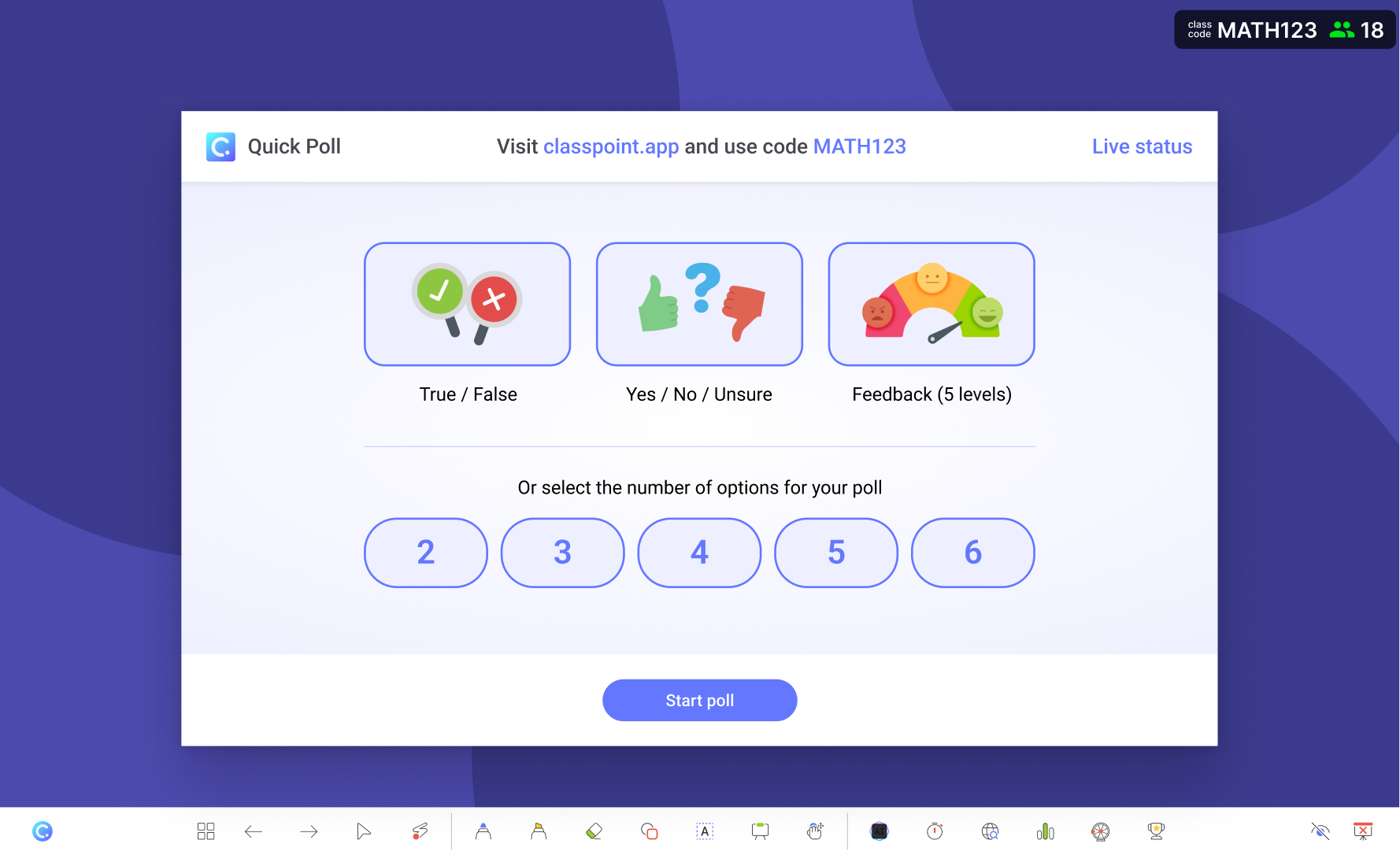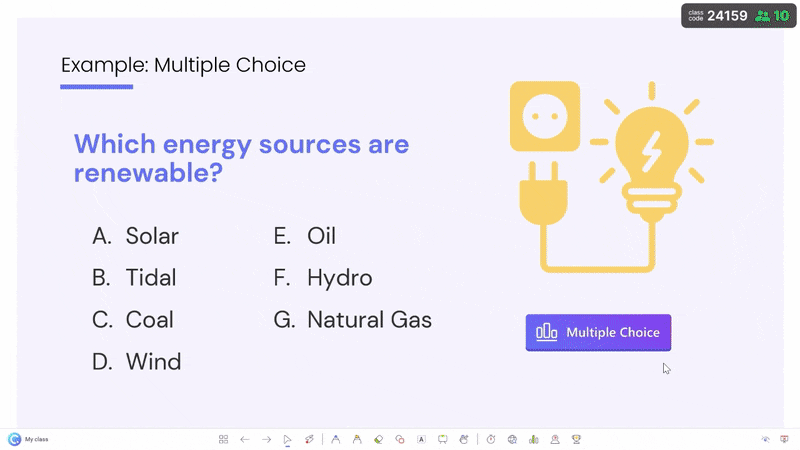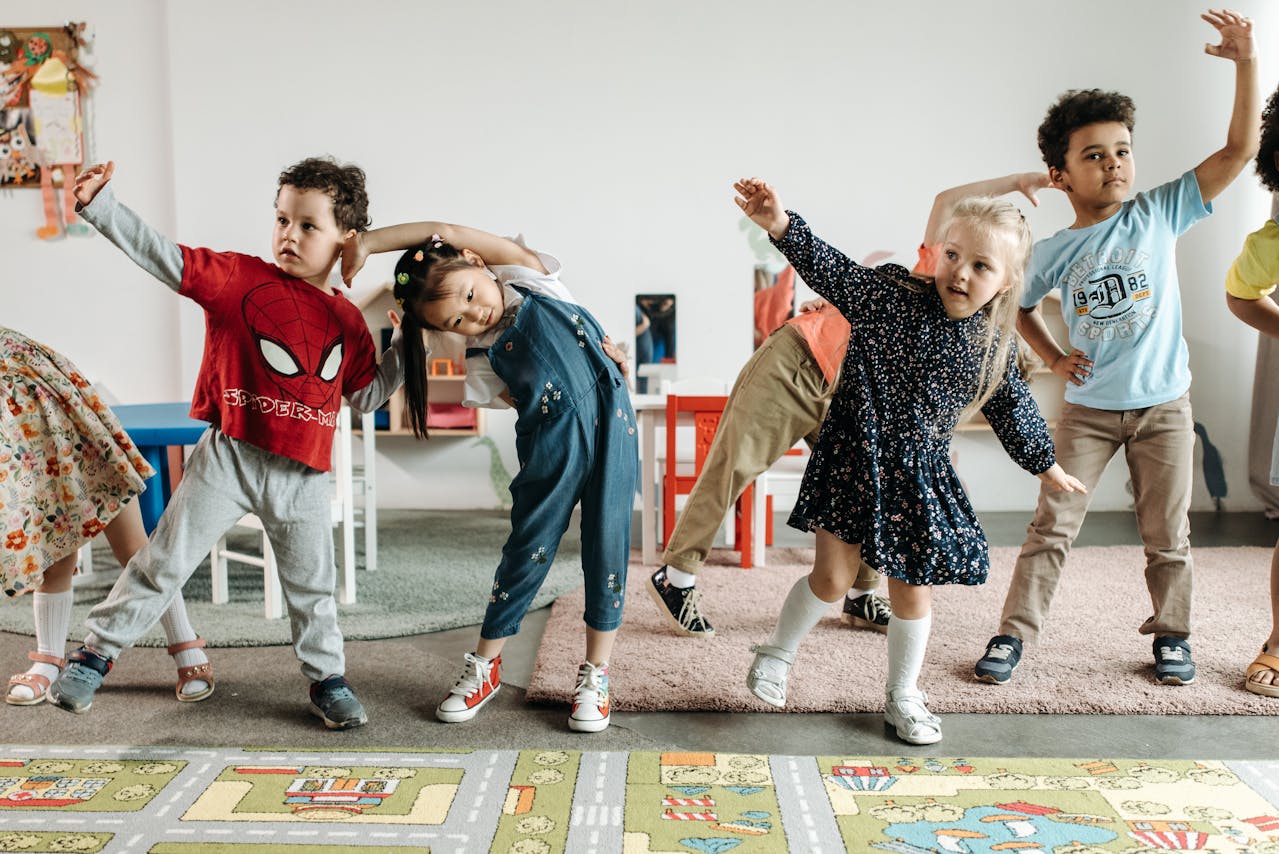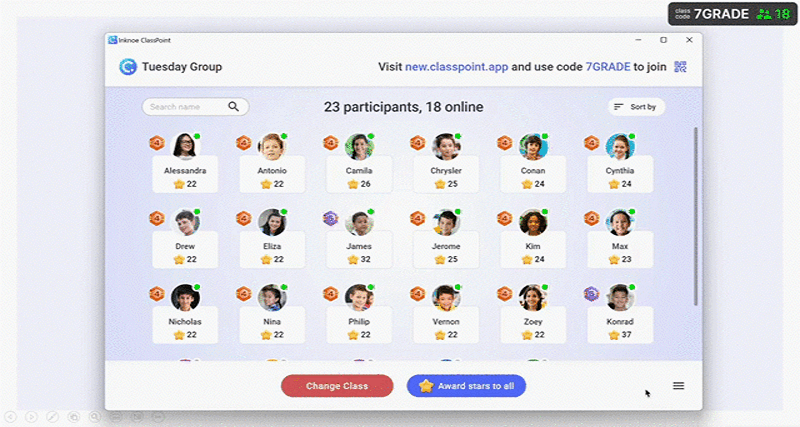Learning shouldn’t feel like a test, especially in kindergarten! But how can you assess what your young students are grasping without resorting to boring worksheets? Here’s the secret: formative assessment can be fun and engaging, all while giving you valuable insights into their progress.
In the kindergarten context, formative assessments are more than just asking questions. It entails easy-to-follow activities that involve moving, collaborating, and creative thinking. Instead of dreading assessment day, your students will be excited to participate in these interactive learning checks!
What is Formative Assessment for Kindergarten?
Formative assessment is all about checking in with your students regularly to see what they understand and where they might need a little extra help. It’s different from a test; it can be anything from quick quizzes with fun answer choices to engaging games and activities that reinforce concepts. Formative assessments are ongoing and helps guide your teaching, rather than just measure learning at the end. It also helps teachers identify areas where students excel and where they might need a little extra support. But most importantly, it allows students to receive immediate feedback and feel engaged in their learning journey.
Why are Formative Assessment Examples for Kindergarten Important?

Traditional assessments can feel intimidating for young learners, especially in kindergarten. Formative assessment, on the other hand, flips the script by making learning a fun and interactive experience. But the benefits go far beyond just keeping things playful. Here’s how formative assessment can truly transform your kindergarten classroom:
- Tailored Instruction: Formative assessment acts as a map, providing real-time insights into each student’s learning journey. Teachers can see what concepts students grasp and where they might need a little extra help. With this valuable information, you can ditch the “one-size-fits-all” approach and tailor your lessons to meet the specific needs of each child. This means more targeted practice for those who need it and exciting challenges for those who are ready to move ahead.
- Confidence Boost: Learning is an adventure, and formative assessment is like having built-in cheerleaders along the way. Quick checks, playful activities, and positive feedback during formative assessments let students know they’re on the right track. This constant encouragement creates a sense of accomplishment and builds confidence in their abilities. When students feel confident, they become more engaged learners, eager to take risks, explore new ideas, and reach their full potential.
- Early Intervention: Sometimes, even the brightest stars need a little extra guidance. Formative assessment allows you to identify areas where a student might be struggling before those struggles become a bigger obstacle. This early detection is crucial and by catching challenges early on, you can provide targeted support and get students back on track quickly. This not only prevents frustration and keeps students motivated, but also ensures they have a strong foundation for future learning.
So, ditch the boring test; here are 25 formative assessment examples for kindergarten classrooms that are guaranteed to be engaging, and most importantly, fun!
Keep It Short and Sweet with Quick Checks
Forget paper tests and long quizzes. These quick checks are all about keeping things short while providing immediate feedback in a way that keeps kindergarteners excited to learn.
1. Thumbs Up/Thumbs Down

This classic quick check is an easy way to gauge the overall understanding of a concept. Simply pose a question and ask students to hold up their thumbs – thumbs up for “yes, I get it!” and thumbs down for “not quite yet.” This quick visual check allows you to see how the class is doing as a whole and identify any areas that might need some clarification.
Pro Tip: For another engaging alternative, conduct this activity using Quick Polls on ClassPoint. Great for digital classrooms or physical classes that needed more participation!
2. Show Me the Answer
Get your students moving with this interactive quick check. Pose a question and have students respond with a physical movement that represents the answer. For example, if you’re teaching about shapes, ask “Who can show me a circle with their arms?” or if you’re reviewing numbers, ask “How many jumps does it take to get to the number 3?” This kinesthetic approach keeps students engaged and helps solidify their understanding through movement.
3. Exit Tickets
At the end of a lesson, have students draw a quick picture, write a simple sentence on a piece of paper, or do a Word Cloud activity to describe their day in one word and to represent what they learned. This quick snapshot allows you to assess individual understanding and identify any lingering questions students might have.
4. Choral Response
Learning through repetition can be incredibly effective. Turn key concepts into catchy chants or rhymes and have students repeat them together. This not only reinforces understanding but also creates a sense of community and shared learning in the classroom.
5. Quick Games

Who says learning can’t be a game? Quick games are a fantastic way to assess skills in a pressure-free environment. Try playing “Roll and Say” where students roll a dice and answer a question based on the number they land on, or create a simple bean bag toss game where students have to answer a question before tossing the beanbag.
Pro Tip: Ditch the physical and do everything online by using ClassPoint's interactive quiz feature to create a digital "Roll and Say" game. Then, use the Embedded Browser to pull a random dice rolling website directly into your presentation.
Hands-On Activities for Fun Learning
We all know kindergarteners learn best through play, but the good news is that playtime can be an opportunity to conduct formative assessments. By observing how students interact with materials and engage in pretend play, you can gain valuable insights into their understanding of various concepts.
6. Building Blocks
Don’t underestimate the power of a simple block tower! Building with blocks helps develop math concepts like spatial reasoning and early geometry. Observe how students stack blocks, create shapes, and balance structures. This can reveal their understanding of size comparison, symmetry, and problem-solving skills.
7. Sorting Games
Sorting games are more than just fun – they’re a fantastic way to assess categorization and critical thinking skills. Provide students with a variety of objects and ask them to sort them by color, size, shape, or function. Observe their sorting strategies and reasoning behind their choices.
8. Matching Games

Matching games are a classic for a reason! They’re an engaging way to reinforce letter/number recognition and visual discrimination skills. Whether it’s matching uppercase and lowercase letters, matching numbers and their corresponding quantities, or matching objects by category, these games allow you to assess students’ grasp of these key foundational concepts.
Pro Tip: Digitize these matching games straight on your PowerPoint slides with ClassPoint’s Draggable Objects feature, where you can easily drag and drop pictures, symbols, and more!
9. Playdough Creations
Playdough isn’t just for sculpting silly shapes — it’s a fantastic tool for developing fine motor skills and imagination. Observe how students manipulate the play dough, create shapes, and use various tools. This can reveal their hand-eye coordination, dexterity, and ability to follow instructions.
10. Dramatic Play
Dramatic play is a goldmine for observing social skills and communication skills. As students engage in pretend play scenarios, watch how they negotiate roles, share materials, and express themselves through language. This provides valuable insight into their ability to collaborate, resolve conflicts, and use their imaginations.
Learning Through Creative Expression
Learning is a blast when students can show their artistic flair! You can gain valuable insights into their knowledge and thought processes by encouraging students to express their understanding through creative outlets.
11. Drawings/Diagrams

A picture is worth a thousand words, especially for young learners who are still developing their writing skills. Provide students with opportunities to draw pictures or diagrams to represent what they’ve learned. This can be anything from illustrating a scientific concept to depicting the characters in a story. Observe their drawings to assess their understanding of key details and concepts.
Pro Tip: Using a Touch Board or Promethean in your classroom? Save paper by using a built-in whiteboard on your presentation slides with ClassPoint’s Presentation Tools or conduct a Slide Drawing activity.
12. Storytelling
Storytelling is a powerful tool for developing communication skills, sequencing, and imagination. Encourage students to tell stories individually or in groups, either based on a prompt or from their own creativity. Pay attention to how they order events, use descriptive language, and express themselves creatively through their narratives.
13. Singing Songs
Learning through music is always a hit! Incorporate age-appropriate songs and rhymes that reinforce concepts you’re teaching in the classroom. Observe how students participate, remember the lyrics, and connect the songs to the learning objectives. Singing can be an exciting way to assess their understanding in a relaxed and enjoyable way.
Pro Tip: Distance-learning kindergarten students can still sing along in class with tools like ClassPoint’s audio record feature.
14. Simple Crafts
Simple arts and crafts activities like cutting, pasting, or decorating provide opportunities to develop fine motor skills. Observe how students manipulate materials, use tools safely, and follow instructions to complete the craft. This can reveal their fine motor skills, ability to focus, and understanding of sequential steps.
15. Movement Activities
Students shouldn’t be confined to desks to learn. Get your students moving with fun activities that assess motor skills and their ability to follow instructions. Create movement games that involve following directions, imitating actions, or responding to cues. Observe their coordination, balance, and ability to follow instructions in a dynamic way.
Collaborative Learning for Playful Progress
Learning doesn’t happen in isolation! Collaborative learning activities allow students to work together, share ideas, and build on each other’s knowledge. This not only fosters social skills and communication but also provides valuable opportunities for formative assessment.
16. Think-Pair-Share

This classic strategy promotes critical thinking and communication. Pose a question and have students think about the answer individually (Think). Then, pair them up to discuss their ideas and share their perspectives (Pair). Finally, bring the class together and have each pair share their insights with the whole group (Share). Observe how students explain their thinking, listen to their peers, and build upon each other’s ideas.
Pro Tip: Give everyone an equal chance to pair up by using a random name picker. This way, every student has the opportunity to get to know all their classmates.
17. Gallery Walks
Transform your classroom into an art gallery! Have students showcase their work on a project or activity around the room. Then, organize a “gallery walk” where students circulate and observe each other’s work. Encourage them to ask questions, provide constructive feedback, and leave comments on sticky notes. Observe their communication skills as they interact and share their learning journeys with classmates.
18. Group Projects

Working together on a project is a fantastic way to develop collaboration, problem-solving skills, and a sense of shared responsibility. Provide students with a central theme or challenge and allow them to work together to plan, create, and present their projects. Observe their teamwork, communication, and ability to delegate tasks as they work towards a common goal.
Pro Tip: You can gamify group discussions by awarding stars and points for participation, keeping students motivated and engaged.
19. Role-Playing
Role-playing provides a safe space for students to practice social skills in a playful way. Create scenarios that involve taking turns, negotiating, resolving conflicts, and expressing oneself appropriately. Observe how students interact in their assigned roles, communicate effectively, and navigate social situations.
20. Jigsaw Activities
Jigsaw activities turn students into “experts” on a topic. Divide the learning material into smaller chunks and assign each student (or small group) a section to become an expert on. Students then come together to teach each other what they’ve learned (jigsaw). This collaborative approach allows you to assess their understanding of their assigned topic as well as their ability to communicate effectively with their peers.
Pro Tip: Effortlessly divide your classroom into groups on PowerPoint using ClassPoint's Grouping function.
Observation and Reflection for Learning Growth
Just by watching your students at play and during routines, you can gain a wealth of information about their learning and development. Observation is a powerful tool for formative assessment, allowing you to see firsthand how students interact with their environment, solve problems, and apply new concepts. Here are some ways to harness the power of observation in your classroom:
21. Play Observation
Free play time is a treasure trove of learning opportunities! Observe how students interact during play, share materials, negotiate, and resolve conflicts. This can reveal their social skills, communication skills, and problem-solving strategies.
22. Self-Assessment Tools
Use simple self-assessment tools like smiley faces, checklists, or rubrics to encourage students to reflect on their own learning. Observe how they evaluate their progress, identify areas for improvement, and set personal learning goals.
23. Circle Time Participation

Pay attention to how students participate in circle time activities, listen attentively to instructions and stories, and raise their hands to contribute to discussions. This provides insight into their listening skills, ability to follow group expectations, and comfort level in participating in whole-class activities.
Pro Tip: Don’t let the shy kids get left behind! Follow these expert tips on how to engage shy students effectively in the classroom.
24. Individual Check-Ins
Schedule brief, informal check-ins with students throughout the day. Ask them simple questions about their learning, answer any questions they might have, and provide encouraging words. Observe their communication skills, comfort level discussing their learning, and ability to articulate their needs.
25. Daily Activities

Observe students’ independence, ability to follow directions, and social skills during classroom procedures and routines like lining up, putting away materials, completing morning work, cleaning up their workspace, and participating in circle time activities. This reveals their organization skills, attention to detail, ability to manage themselves in a structured environment, listening skills, and comfort level participating in whole-class activities.
Ready for more formative assessment fun? Check out these additional guides on formative assessment examples for math as well as questions to assess science skills!
Level Up the Fun: Bringing Technology into Formative Assessment for Kindergarten
While hands-on activities and creative expression reign supreme in kindergarten, technology can be a powerful tool to enhance and elevate your playful formative assessments. Here’s how EdTech can seamlessly integrate into your assessment strategies:
Interactive Games and Apps

Educational apps and game-based learning platforms like Prodigy as well as ClassPoint’s gamification and quiz mode features can make formative assessments more interactive.
Look for apps that align with your learning objectives and incorporate features like badges and leaderboards as well as the ability to turn multiple-choice questions into interactive quizzes with auto-grading and points to keep students motivated. Use these games as quick checks for understanding, allowing students to practice skills in a fun and pressure-free environment.
Digital Storytelling and Presentations
Instead of traditional written reports (not recommended for kindergarteners yet!), explore digital storytelling tools, with parental supervision of course. These allow students to record their voices, add pictures or videos, and create short interactive presentations to showcase their learning. This not only assesses their understanding of concepts but also develops their communication skills and digital literacy.
Augmented Reality (AR) and Virtual Reality (VR)
While these technologies might seem advanced for kindergarten, there are age-appropriate AR/VR apps and experiences emerging. These immersive experiences can enhance learning and provide unique opportunities for formative assessment through observation and student engagement.
Need trusted EdTech suggestions to amplify your formative assessment for kindergarten classes? Check out these top 6 tools to make these playful assessments more interactive.
Final Thoughts
Forget the dread of traditional testing and embrace the world of formative assessment in your kindergarten classroom. With a variety of these activities, from quick checks and hands-on play to creative expression and collaborative learning, you can keep your students excited about learning while gaining valuable insights into their progress. By making learning more dynamic and interactive, you’re setting your students up for success in kindergarten and beyond.
And don’t forget the power of technology! With tools like ClassPoint, you can transform formative assessment into a gamified experience, making it even more thrilling for your young learners.
Now that you’re armed with these playful formative assessment examples, get ready to transform your classroom into a place of discovery, exploration, and, of course, fun!
